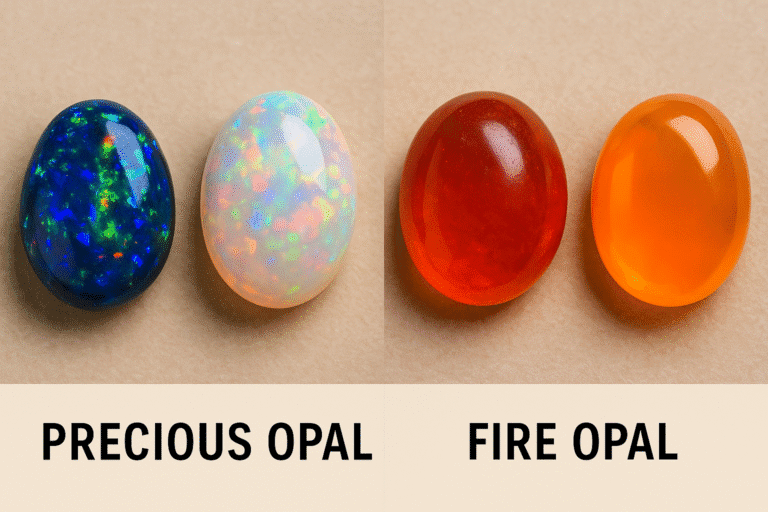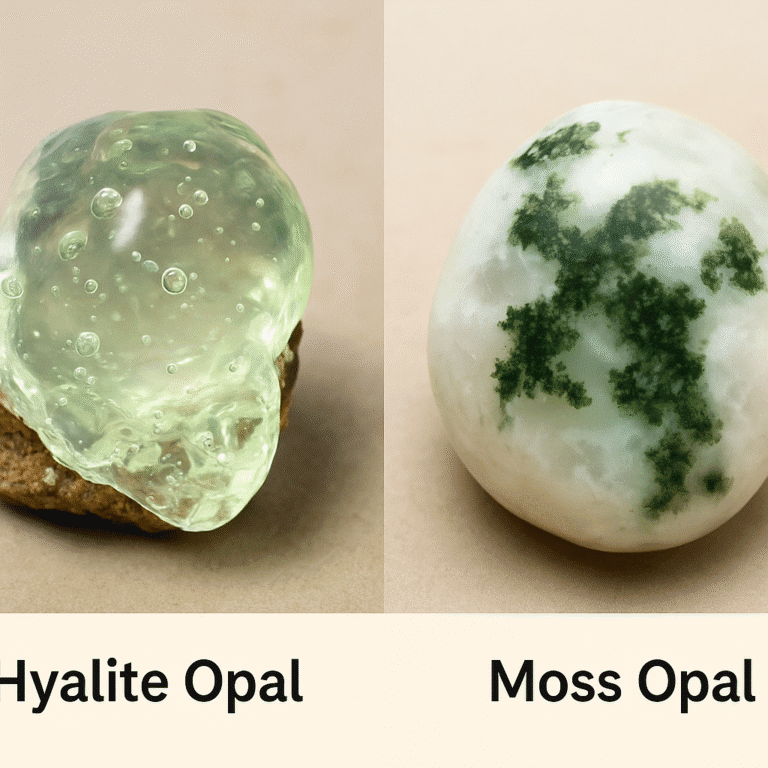Monthly Mineral Spotlight – October
Opal: Fire, Color, and Hidden Worlds
Opal is one of the most enchanting materials a rockhound can discover. Known for its rainbow flashes, pastel hues, and incredible variety, opal has inspired myths, art, and gemstone collecting for centuries. October is the perfect time to explore this brilliant mineraloid.
What Is Opal?
Opal is a hydrated silica mineraloid made of microscopic silica spheres. When these spheres are uniform and aligned, they diffract light to produce play-of-color — the hallmark of precious opal.
Irregular spheres create common opal, which displays solid color without fire.
SEO keywords: types of opal, precious vs common opal, opal formation, opal identification.
Quick Identification Guide
• Precious opal shows play-of-color
• Common opal has solid color
• Hardness 5.5–6.5
• Conchoidal fracture
• Translucent edges in many varieties
• Hydrophane opal absorbs water
Varieties of Opal
Precious Opal
Brilliant flashes of spectral color.
Fire Opal
Orange to red; may or may not contain play-of-color.
Moss Opal
Common opal with leafy or mossy inclusions.
Opalized Wood
Fossil wood replaced with opal (common in Nevada).
Hyalite Opal
Clear, glassy, often fluorescent.
Boulder Opal
Precious opal veins in ironstone.
Matrix Opal
Opal dispersed through porous host rock.
How Opal Forms
Opal forms when silica-rich water fills cracks, voids, or cavities in rock. As the water evaporates, silica spheres remain. The size and arrangement of these spheres determine whether the opal is precious or common.
Opal forms in:
• volcanic ash beds
• sedimentary basins
• basalt cracks
• fossil cavities
• opalized wood deposits
Major Opal-Producing Areas
United States
• Northern Nevada — famous for opalized wood and black precious opal
• Oregon — Opal Butte and volcanic deposits
• Idaho — common opal in many colors
Australia (global leader)
• Coober Pedy — white and crystal opal
• Lightning Ridge — black opal
• Queensland — boulder opal fields
• Andamooka — matrix opal
Mexico
Known for transparent fire opal.
Ethiopia
Hydrophane opal that absorbs water.
Rockhounding Tips for Collecting Opal
• Bring water to rinse material
• Use care — opal can crack if exposed to heat
• Hydrophane opal changes appearance when wet
• Look for opalized wood fragments in volcanic regions
• Some opal fields are fee-dig areas
Lapidary Notes
• Opal is soft—polish gently
• Use light pressure when cutting
• Avoid overheating; it may craze
• Stabilization is sometimes used for porous material
FAQs About Opal
Why does opal show color?
Play-of-color comes from light diffracting off silica spheres.
Is hydrophane opal good for jewelry?
It can be—but it absorbs water, so care is needed.
Is Nevada opal really petrified wood?
Yes — much of Nevada’s precious opal began as buried wood replaced by silica-rich fluids.
Fun Fact
Coober Pedy is so hot that most residents live in underground homes called “dugouts,” carved directly into old opal workings.
Conclusion
Opal’s diversity, beauty, and geological complexity make it one of the world’s most treasured mineraloids. From Nevada’s opalized wood to the rainbow flashes of Australia’s black opal, October is the perfect month to explore this magical material.


Fun Fact About Nevada Opal
Most of the precious opal mined in northern Nevada began as petrified wood. Millions of years ago, the region was covered by lush forests. When volcanic ash buried the trees, groundwater dissolved silica from the ash and replaced the wood tissues with opal. In some pieces, the original wood grain is still visible beneath the colorplay.

